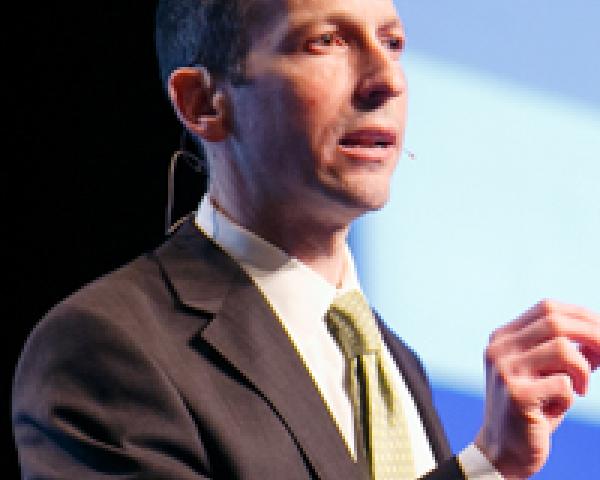Are you Zoomed out? Had your fill of webinars? Well, you’re not alone.
As the conference and events industry has pivoted to virtual gatherings, it’s become increasingly apparent how unfamiliar many meeting sponsors and speakers are with the digital stage. Since the COVID-19 lockdown, I’ve attended several such events (as an audience member) and, well… let’s just say there’s plenty of room for improvement.
Most of the events were marked by technical glitches that should have been prevented with good, thorough preparation. (One major event even managed to mess up the posting of pre-recorded segments. I understand that livestreams are a bit of a wildcard, but to not nail the pre-recorded sessions – how does that even happen?)
What’s worse, though, is that even when the A/V platforms were chugging along perfectly, the presenters weren’t.
There were mind-numbing PowerPoint slides. (Granted, that can happen at live events, too – but, boy, it sure feels more painful online.)
There were physical printouts held up awkwardly to webcams as visual aids, eliciting a flurry of chat box complaints from viewers who couldn’t make out the documents.
There were awkward webcam angles that revealed far more about speakers’ nostrils than any attendee needed to see.
There were distracting backgrounds, with speakers presenting in front of everything from cluttered home offices to gloomy basements to Zoom-generated tropical beaches.
There were light exposure goofs that made it appear that some speakers were presenting from the surface of the sun, while others were broadcasting from their closets.
And there were those little headshot video feeds of the presenter, tucked into the corner of a PowerPoint slide, looking more like a mediocre language translator than a stage-commanding keynoter.
If virtual events are to be successful (and, mind you, I think they can be), then conference organizers and speakers need to approach them less like a Zoom call and more like a TED talk.
People routinely consume TED talks online and love them. They’re engaging, they’re polished and they don’t bear any resemblance whatsoever to boring, low-energy Zoom presentations.
Of course, TED talks are recorded before a live audience, giving them a vitality that no purely virtual event can match. Nevertheless, virtual events can certainly do more to replicate the character of a TED talk, even while we might all acknowledge that it is a high bar to fully meet.
As meeting professionals and speaker bureaus look for ways to stay relevant in the midst of a travel-inhibiting pandemic, it’s incumbent upon them to guide their clients (both event sponsors and keynote speakers) in how to achieve that aspiration.
See also: Building a Virtual Insurer Post-COVID
I’ve written about this previously (“7 Ways To Make Your Virtual Conference Successful”), but, given what I’ve witnessed in recent weeks, some additional tips are in order – specifically related to how speakers present themselves during these events:
- Stand up. Yes, you can sit down for a regular business videoconference, but to stay seated for delivery of a keynote? Absolutely not. Speakers exude so much more energy when they stand and deliver. Presuming speakers are physically able, that’s the position from which they should present.
- Zoom out. Part of the energy that’s conveyed by a live, onstage speaker comes from body language. If the virtual keynoter has the camera or webcam set for what is essentially a headshot, then the audience loses the opportunity to see hand gestures and other physical movements that help engage viewers.
- Go eye-to-eye. The speaker’s camera angle shouldn’t be the most intriguing part of the presentation. No one wants to see a digital keynote from the bird’s eye view of a camera positioned too high, or the nostril-revealing perspective of one positioned too low. Film at eye level (when standing, not sitting).
- Ditch the thumbnail. It’s tough to command the digital stage when your video feed is constrained to a square inch of screen real estate on your audience’s devices. Speakers should be using livestream software to exert greater control over how their video image and presentation visuals are rendered online (e.g., full screen speaker video with cuts to visuals, or split-screens with speaker video positioned alongside visuals).
- Swap the stage for a studio. When a live, onstage keynote isn’t possible, the most suitable replacement isn’t a laptop with a webcam and embedded microphone, positioned on a desk in a dreary office. (Imagine if TED talks were recorded that way.) World-class virtual events require something more, which is why speakers (and perhaps even showrunners and bureaus) should be investing in creating their own studios, complete with high-quality audio/video equipment, professional lighting, backdrops and all the related accessories.
- Avoid distractions. It can be tempting to enliven a virtual keynote with creative Zoom backgrounds, green screen effects, animations and other technological wizardry. Avoid that temptation; it gets old fast. Choose substance over sizzle. Compelling content, delivered in an engaging manner, will always win the day.
If event speakers and meeting organizers want to successfully move to a digital-first world, it’s going to require more than “phoning it in” via a traditional webinar setup. Audiences don’t want another boring Zoom or WebEx. They want a full-fledged digital event experience — as close a proxy as possible for seeing experts and luminaries onstage.
If meeting professionals and speakers don’t start delivering precisely that, then the industry’s pandemic-induced business pause will turn into a much longer and more troublesome drought.
This article was originally published here.








